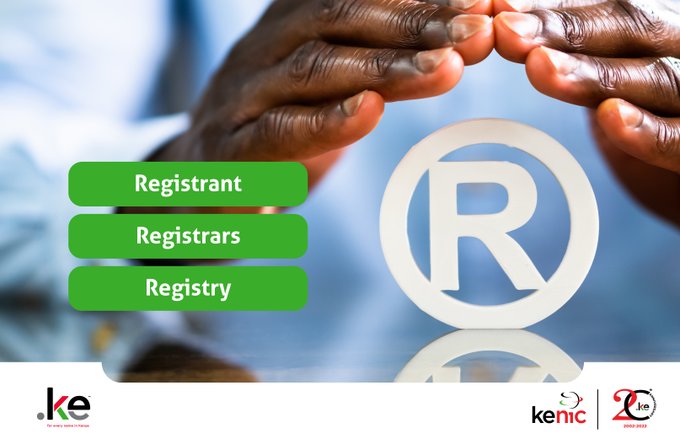When it comes to managing domain names, there are several key players involved: the domain registrar, the registrant, and the registry. Understanding the roles of each of these entities is crucial for anyone who owns or manages a website. Below is a comprehensive breakdown defining each term and how they relate to one another.
What is a Domain Registrar?
A domain registrar is a company that allows individuals and organizations to register domain names. When you want to register a new domain name, you’ll typically do so through a domain registrar. Some popular ‘.Ke’ domain registrars include Truehost Cloud Limited, DeepAfrica Co Ltd, and Host Pinnacle Kenya Limited.
When you register a domain name with a registrar, you’ll typically pay an annual fee to keep that domain name registered to you. You’ll also need to provide contact information, including your name, phone number, and email address. This information is stored in a publicly accessible database called WHOIS.
Domain registrars typically offer additional services beyond just registering domain names. For example, many registrars offer website hosting, email hosting, and website-building tools. Some registrars also offer tools to help you improve your website’s search engine optimization (SEO).
What is a Registrant?
The registrant is the person or organization that registers a domain name. When you register a domain name, you become the registrant for that domain. As the registrant, you have the right to use the domain name for a certain period typically one year. You can renew your registration for additional years as long as you continue to pay the registration fee.
As the registrant, you’re responsible for keeping your contact information up to date with the domain registrar. This is important because if there are any issues with your domain name (such as a payment dispute), the registrar needs to be able to contact you.
What is a Registry?
The registry is the organization that manages the domain name system (DNS) for a particular top-level domain (TLD). For example, KENIC (Kenya Network Information Center) is the registry charged with the management and administration of the .Ke domain, Kenya’s Country Code Top Level Domain.
The registry is responsible for maintaining a database of all the domain names registered under its TLD. When you register a domain name with a registrar, the registrar communicates with the registry to ensure that the domain name is available and to complete the registration process.
The registry also manages the technical aspects of the DNS, such as ensuring that domain names are correctly mapped to IP addresses. This is essential for ensuring that when someone types in your domain name, they’re directed to the correct website.
Conclusion
Understanding the roles of the domain registrar, registrant and registry is essential for anyone who owns or manages a website. Visit our website at www.kenic.or.ke to begin your journey to becoming a Kenyan online by registering for a .ke domain.
Author – James Keter, Marketing Intern
